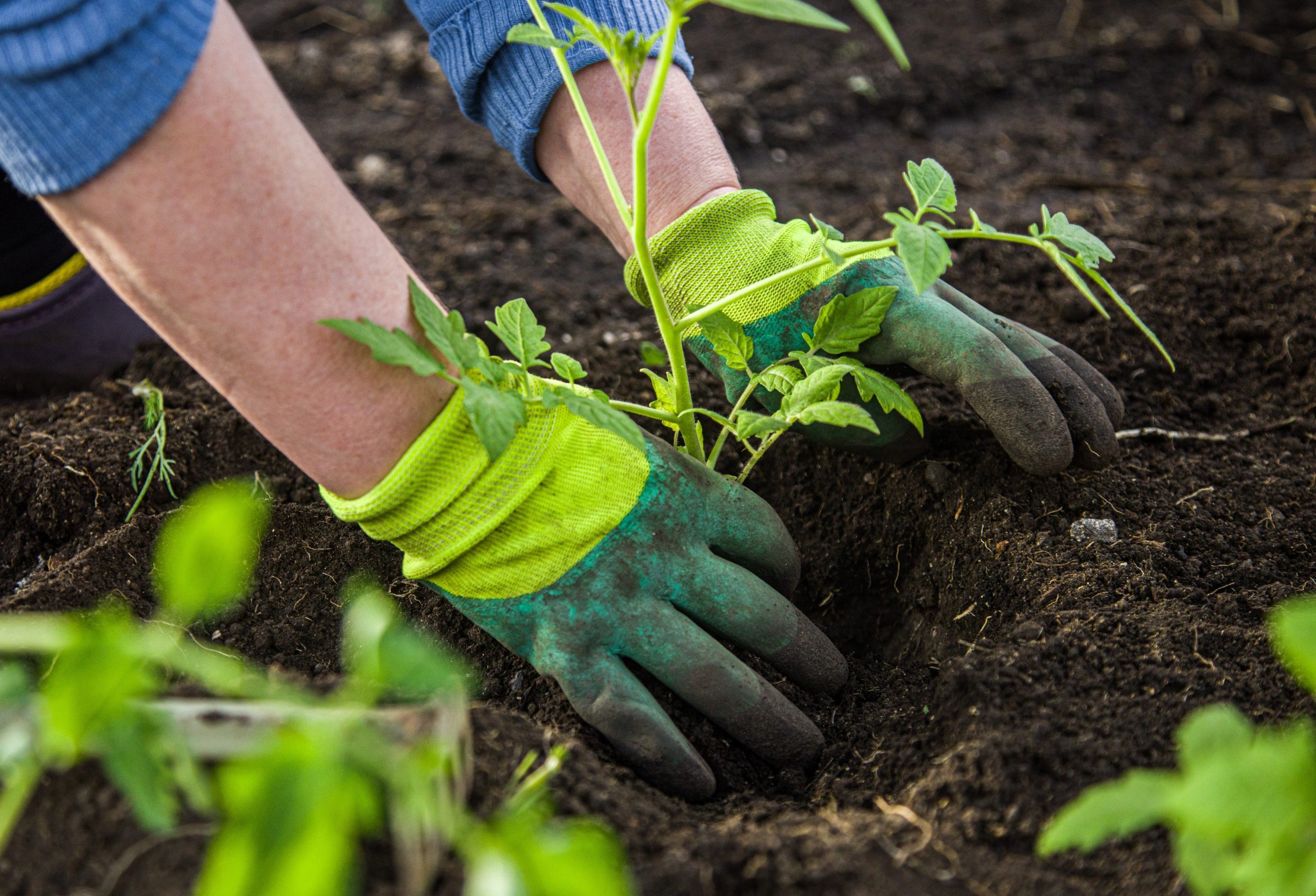
Robohub.org
Robochop makes garden trimming a snip

A sustainable and scalable gas fermentation technology transforms CO2 from industrial emissions into a single cell protein for animal nutrition. © Valdis Skudre, Shutterstock
By Andrew Dunne
Gardening is proven to be healthful and joyful, but as more of us discover the joys of working in the garden for the first time, some basic knowledge about plants, landscaping and soil is required to get started. What, where and when should you plant, for instance?
These were some of the core questions co-founder of the start-up Draw Me A Garden (DMAG), Florent De Salaberry, realised were standing in the way of more people digging in to the subject.
IKEA-like
Many people want to garden, but lots of us just don’t have the expertise or confidence to begin,’ said the French tech entrepreneur.
DMAG is an app and website service which offers tailored 3D-plans for garden design. It helps budding gardeners to transform any plot into a beautiful, sustainable garden with ease.
The inspiration behind the company’s name comes from the children’s book ‘Le Petit Prince’ in which the prince requests the narrator to ‘draw me a sheep’ to start a conversation and build a relationship.
De Salaberry says “Draw Me A Garden” uses digital tools in a similar way to help people build a relationship with nature in their gardens.
The DMAG service helps customers envisage their dream garden by providing creative ideas, planting tips and, most important of all, delivering all the plants to their door.
Giving customers ownership of their creations is what distinguishes DMAG from traditional landscaping, argues De Salaberry. ‘We know that if you just pay people to landscape your garden, not only is that really expensive but it’s also hard to feel pride in it,’ he said.
‘DMAG is about making gardening easy and affordable, and providing the resources to enable customers to be at the heart of their own projects.’
Garden varieties
Customers locate their garden online via a satellite map. Next, they list any pre-existing features such as a terrace or a child’s play area, then select a preferred garden style, such as for example English cottage garden or Mediterranean.
“Many people want to garden, but lots of us just don’t have the expertise or confidence to begin.”
– Florent de Salaberry, Draw Me A Garden
Behind the scenes, DMAG’s algorithm whirrs away using these inputs together with local knowledge (soil type, elevation, sun direction) to map out the perfect garden design. Customers can visualise the design using 3D mapping tools on the DMAG website.
A qualified landscaper supports the design process and the customer receives a number of planning options to mull over.
Green thumbs
Results come back almost instantaneously. ‘The idea was always to enable customers to do this wherever or whenever they wanted and it takes just a few seconds to get the first design back,’ said De Salaberry.
Once further small refinements are made, a 3D view is rendered, and customers can sit back and wait for all plants and growing instructions to be delivered.
A typical delivery might consist of between 200 – 300 plants. These come with biodegradable cardboard scaffolds cut to the exact garden size and instructions to help the gardeners plant them out.
So far, the DMAG team have supplied to gardeners of all kinds in France, Belgium and Luxembourg, with average expenditure of around €1 500.
De Salaberry likens his turnkey garden concept to how IKEA has revolutionised kitchen design.
As they look to scale-up this work in new EU countries and the US, they hope many more people will soon be asking them to start their gardening journey and “draw me a garden.”
Glade runner
If DMAG can help gardeners create the ideal future garden space, then the TrimBot2020 might be the answer to help maintain it.
The brainchild of computer vision and robotics’ expert, Professor Bob Fisher of the University of Edinburgh, TrimBot2020 is one of the first robot gardening devices that promises to do more than simply mow the lawn.

The TrimBot2020 © TrimBot2020 Consortium, 2020
Based on a modified commercially available robot lawnmower, the autonomous vehicle prunes roses, trims hedges and shapes topiary, all while auto-navigating garden terrain.
To achieve this, the robot uses a ring of cameras to draw a 3D map of the garden, some robotic snippers and hefty dose of computer processing power.
‘There are ten cameras which work together to build up a 3D model of the garden, just like our eyes do,’ said Fisher.
Together, these cameras help the robot gain a 360-degree view of the complex terrain of the garden. The robot also matches what it sees to a hand drawn map supplied by the users.
Upon command, the TrimBot springs into life by rolling up to the bush and scanning it to build up a computer-vision model of that particular plant.
‘Once it has an idea of where all the stems are, its robotic arm comes out with the cutter and it starts snipping away,’ said Fisher.
Robochop
For the TrimBot team, the commercial target market is horticultural businesses responsible for maintaining parks, gardens, and recreational areas.
In such cases, they believe the robot can take on pruning duties while the human gardener does something more challenging.
While the commercial future of TrimBot is yet to be determined, the real benefits may yet come through incorporating the technology into the “brains” of next-generation of garden robots.
‘Outdoor robotics is notoriously hard,’ said Fisher. Typical challenges include constant lighting changes, the many different shades of green and variations in the terrain.
Current robot lawnmowers usually require users to mark out an exact area to mow and to position a robot in the right place to start. TrimBot’s technology should enable robots of tomorrow to work that out themselves.
‘With the TrimBot project we’ve really demonstrated what might be possible in the future,’ said Fisher.
Research in this article was funded by the EU.
This article was originally published in Horizon, the EU Research and Innovation magazine.
tags: c-Research-Innovation




